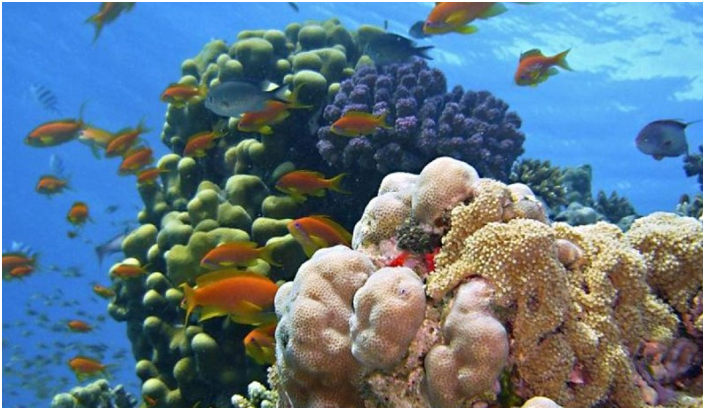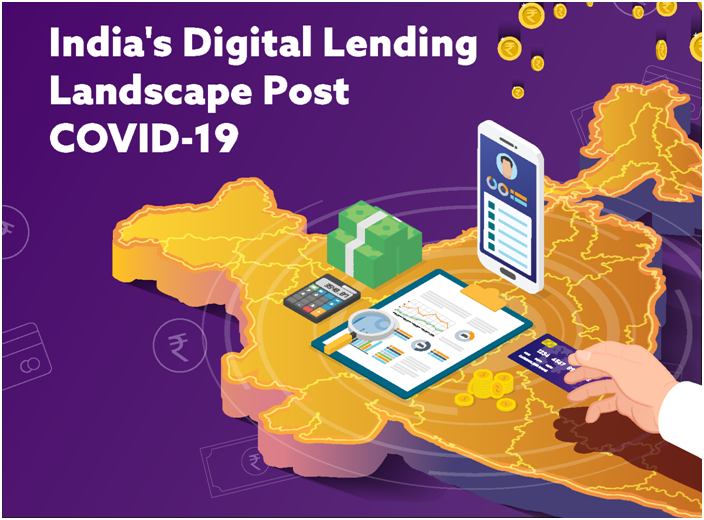India’s first Saline Water Lantern (GS Paper 3, Science and Tech)

Why in news?
- Recently, Ministry of Earth Sciencehas launched India’s first Saline Water Lantern which uses the sea water as the electrolyte between specially designed electrodes to power the LED lamps.
- Union Minister DrJitendra Singh unveiled the first-of-its kind lantern named “Roshni” during a visit to SAGAR ANVESHIKA, a Coastal Research Vessel, operated and used by the National Institute of Ocean Technology (NIOT), Chennai for coastal research.
Scope:
- The Saline Water Lantern will bring “Ease of Living” to the poor and needy, particularly the fishing community living along the 7500 Kilometres long coastal line of India.
- Saline Water Lantern will also boost and supplement Prime Minister’s UJALA scheme launched in 2015 for distribution of LED bulbs across the country.
- Roshini Lamps along with Power Ministry’s schemes like Solar Study Lamps will be driving a vibrant renewable energy programme aimed at achieving energy security, energy access and reducing the carbon footprints of the national economy.
- This technology can also be used in hinterlands, where sea water is not available, as any saline water or normal water mixed with the common salt can be used to power the lantern, which is not only cost-effective, but very easy to operate.
Low Temperature Thermal Desalination (LTTD) technology:
- He also reviewed the progress of NIOT developed Low Temperature Thermal Desalination (LTTD) technology for conversion of sea water to potable water, which has been successfully demonstrated in Lakshadweep islands.
- Three desalination plants based on the LTTD technology have been developed and demonstrated at Kavaratti, Agati and Minicoy Islands of Union Territory of Lakshadweep. The capacity of each of these LTTD plants is 1 Lakh litre of potable water per day.
- Based on the success of these plants, Ministry of Home Affairs (MHA) through Union Territory (UT) Lakshadweep has entrusted the work of establishing 6 more LTTD plants at Amini, Androth, Chetlet, Kadmat, Kalpeni and Kiltan with a capacity of 1.5 lakhs litres/day.
- The LTTD technology is found suitable for Lakshadweep islands where the required temperature difference of about 15⁰C between sea surface water and deep-sea water is found in the vicinity of Lakshadweep coasts only as of now.
- The cost of desalination plant depends on a number of factors inter alia which includes technology used and location of plant. The total cost of the six LTTD plants in Lakshadweep islands is Rs. 187.75 cr.
Way Forward:
- The Ministry lauded the NIOT team for inventing the Roshini Lamp and advised them to transfer the technology to the industry for mass production of this multipurpose lamp which can be of immense help in rural and remote areas and in the times of the disasters.
Passenger Name Record Information Regulations, 2022
(GS Paper 2, Governance)
Why in news?
- The Passenger Name Record Information Regulations, 2022, notified by the Central Board of Indirect Taxes and Customs (CBIC) under the Ministry of Finance, requires airlines to mandatorily provide details of all international passengers on flights arriving into and departing from India to the Customs department.
- This is for preventing and prosecuting offences under the Customs Act, 1962 relating to “smuggling of contraband such as narcotics, psychotropic substances, gold, arms & ammunition etc that directly impact national security.”

What is the process?
- Airlines will have to transfer the “passenger name record information” from their reservation system to the database of the Customs department.
- This includes details such as PNR (Passenger Name Record) locator code, date of reservation, date of intended travel, all available contact, billing information including credit card number, seat information as well as historical changes to the PNR.
- The CBIC will set up a database, the National Customs Targeting Centre-Passenger (or the database set up by CBIC), to collect passenger information for their “risk analysis”. Such data can also be sought by other law enforcement agencies or government departments of India or any other country.
- The information will have to be shared at least 24 hours before departure and failure to comply will invite a minimum penalty of ₹25,000 and maximum of ₹50,000 for every act of non-compliance.
How has it been received by airlines?
- The regulations come five years after the Finance Bill, 2017 proposed amending the Customs Act, 1962 to allow exchange of passenger data.
- The International Air Transport Association (IATA), a trade association representing 290 airlines globally, says it “welcomes the notifying of the PNR regulations by the CBIC, thereby establishing a proper legal framework for the implementation of the PNR data program for India.”
- It adds that this should now “bring an end to the non-standard passenger data requests from the airlines, by multiple agencies at various airports/stations.” Airlines say the government must hold consultations, frame detailed guidelines and provide a feasible timeline for implementation.
- They also say that since they only pass on the information submitted by passengers, if data fields are missing or if details provided are fake, they should not be penalised.
How were Indian agencies collecting passenger information earlier?
- Earlier, the Bureau of Immigration collected passenger details under Advance Passenger Information System (APIS) following an amendment in 2008 by the Ministry of Home Affairs to the Foreigners Act, 1946. This allowed collection of data pertaining to foreigners, but not Indian citizens traveling in and out of the country.
- The APIS is contained in the Departure Control System of an airline and captures data when passengers check-in at airports and transfers the details to the destination country 15 minutes before flight departure.
- But PNR information is captured by the airline’s reservation system from the time a passenger buys a ticket and offers richer data for risk management such as whether a passenger is travelling alone, or whether s/he paid in cash and if there were multiple changes in a passenger's itinerary. Such information can be shared 24 to 48 hours before departure allowing intelligence agencies enough time to carry out risk analysis.
- Globally Customs is the lead agency for collecting PNR-related information, and is better suited than immigration agencies because of the organised nature of crimes and terrorist activities. Moreover, the Customs department in India is considered to be far ahead in their use of IT systems for risk assessment.
What happens to the privacy of passengers?
- The format for data exchange between airlines and the Customs systems is a standard electronic message format endorsed jointly by the World Customs Organisation (WCO), International Civil Aviation Organisation (ICAO) and the IATA.
- Such data will be retained for a maximum period of five years after which it will be disposed of by de-personalisation or anonymisation but can be “re-personalised and unmasked when used in connection with an identifiable case, threat or risk for the specified purposes”.
- Collecting data on everyone to then do an undetermined risk analysis, rather than selecting a few passengers is problematic. De-anonymising data is a big area of concern on two grounds — it raises questions about the type of anonymisation which can be easily reversed; secondly, there needs to be a high barrier for permitting de-anonymisation and has to be done only on very serious grounds.
- Moreover, all of this is happening when there is no line of sight on a data protection law and what happens to passengers if the data is breached. The Centre on August 3 withdrew the Personal Data Protection Bill, 2019 three years after it was tabled in the Lok Sabha in December 2019.
Conservation of Coastal Ecosystems
(GS Paper 3, Environment)
Why in news?
- Recently, the Comptroller and Auditor General (CAG) of India tabled a report in Parliament on whether steps taken by the Union Environment Ministry to conserve India’s coastal ecosystems have been successful.
- The CAG frequently undertakes ‘performance audits’ of government programmes and ministries.
- This latest report contains the observations from an audit of Conservation of Coastal Ecosystems from 2015-20.

What are the Centre’s obligations on conserving the coastline?
- The government has issued notifications under the Environment Protection Act, 1986, to regulate activities along India’s coasts particularly regarding construction.
- The Coastal Regulation Zone Notification (CRZ) 2019, implemented by the Ministry, classifies the coastal area into different zones to manage infrastructure activities and regulate them.
- The three institutions responsible for the implementation of the CRZ are the
- National Coastal Zone Management Authority (NCZMA) at the Centre,
- the State/Union Territory Coastal Zone Management Authorities (SCZMAs/UTCZMAs) in every coastal State and Union Territory and
- the District Level Committees (DLCs) in every district that has a coastal stretch and where the CRZ notification is applicable.
- These bodies examine if CRZ clearances granted by the government are as per procedure, if project developers once given the go-ahead are complying with conditions, and if the project development objectives under the Integrated Coastal Zone Management Programme (ICZMP) are successful.
- They also evaluate the measures taken up by the government towards achieving the targets under Sustainable Development Goals, a set of United Nations-prescribed targets for countries towards eradicating poverty and becoming sustainable societies.
Why did the CAG undertake this audit?
- The CAG has a constitutional mandate to investigate and report on publicly funded programmes.
- The CAG conducted “pre-audit studies” and found that there were large-scale CRZ violations in the coastal stretches.
- Incidences of illegal construction activities (reducing coastal space) and effluent discharges from local bodies, industries and aquaculture farms had been reported by the media and this prompted it to undertake a detailed investigation.
What did the audit find?
- The audit pointed out various categories of violations. For one, the Environment Ministry hadn’t notified NCZMA as a permanent body and it was being reconstituted every few years. In the absence of defined membership, it was functioning as an ad-hoc body.
- There were instances of the Expert Appraisal Committees, a committee of scientific experts and senior bureaucrats who evaluate the feasibility of an infrastructure project and its environmental consequences not being present during project deliberations.
- There were also instances of the members of the EAC being fewer than half of the total strength during the deliberations.
- The SCZMA had not been reconstituted in Karnataka and there was delayed reconstitution in the States of Goa, Odisha and West Bengal. The DLCs of Tamil Nadu lacked participation from local traditional communities. In Andhra Pradesh, DLCs were not even established.
- There were instances of projects being approved despite inadequacies in the Environment Impact Assessment (EIA) reports.
- These included non-accredited consultants preparing the EIA, using outdated data, not evaluating environmental impacts of the project, not appraising the disasters which the project area was prone to and so forth.
What problems did the CAG find in the States?
- Tamil Nadu didn’t have a strategy in place to conserve the Gulf of Mannar Islands. In Goa, there was no system for monitoring coral reefs and no management plans to conserve turtle nesting sites.
- In Gujarat, instruments procured to study the physiochemical parameters of soil and water of the inertial area of the Gulf of Kutch weren’t used.
- Sea patrolling in Gahirmatha Sanctuary, in Kendrapara, Odisha did not happen. A research laboratory at Dangmal, Kendrapara District, Odisha constructed in 2016 has not been made functional till date.
- There was no website to disseminate the information related to the NCZMA, the CAG found, which is a clear violation of the mandated requirements of the Authority.
What lies ahead?
- These reports are placed before the Standing Committees of Parliament, which select those findings and recommendations that they judge to be the most critical to public interest and arrange hearings on them.
- In this case, the Environment Ministry is expected to explain omissions pointed out by the CAG and make amends.
Digital Lending Landscape
(GS Paper 3, Economy)
Why in news?
- Recently, the Reserve Bank of India (RBI) instituted a framework for regulating the digital lending landscape in the country.
Details:
- It pointed to concerns such as unbridled engagement of third parties, mis-selling, breach of data privacy, unfair business conduct, charging of exorbitant interest rates, and unethical recovery practices bothering consumer confidence and said that they had to be mitigated.
- The latest set of regulations are based on recommendations received from its Working Group on ‘Digital Lending including lending through online platforms and mobile apps’ (WGDL) which was constituted last January.
What is the digital lending landscape like?
- Digital lending utilises automated technologies and algorithms for decision making, customer acquisition, disbursements and recovery. Not only does it lower costs but also ensures speedy disbursal.
- Lending Service Providers (LSPs) act in partnership with Non-Banking Financial Companies (NBFCs) who disburse credit (or a line of credit) to the customer using the former’s platform, making it a multi-sided platform.
- In order to cement their presence in a space with multiple peers, LSPs often resort to reckless lending practices by endowing credit beyond a borrower’s repayment capacity. The risk is mitigated by spreading it to all users by charging higher interest rates.
- The absence of standardised disclosure and regulatory norms made it cumbersome to assess a participant’s operational legitimacy. Between January and the end of February in 2021, there were about 1,100 lending apps available for Indian android users of which about 600 were illegal. They were either unregulated by the RBI or had NBFC partners with an asset size of less than ₹1,000 crore, prompting doubts on its operability.
- The space is largely dominated by NBFCs. Its customers particularly include small borrowers without a documented credit history and thus, not served by traditional financial institutions.
- As for their utility, it primarily lies with short-term loans having tenures of up to 30 days, constituting about 37.5% of the overall product mix, compared to 0.7% for banks, as per the WGDL.

What are the new regulations?
- The central premise is transparency. Lending must be carried out by entities that are either regulated by the RBI or possess permission to operate under a relevant law. Considering the large-scale outsourcing in the industry, this would also help address regulatory arbitrage.
- The RBI has mandated that all loan disbursals and repayments are to be executed directly between the bank accounts of the borrower and the entity. Thus, it eliminates the presence of a nodal pass-through or pool account of the LSP.
- Henceforth, before executing the contract, lenders would have to inform the borrower in a standardised format about all fees, charges as well as the annual percentage rate (APR). The latter refers to the annual rate that is charged for borrowing a loan and is inclusive of processing fees, penalties and all other charges associated with it. This would also help borrowers make better comparisons with industry peers. Further, LSPs cannot raise the credit limit of their customers without prior consent.
- Also, to address the need for a dedicated resolution framework, entities would have to appoint a grievance redressal officer. The ecosystem would also fall under the purview of the RBI’s Integrated Ombudsman Scheme (RB-IOS) should the complaint not be resolved within 30 days of receipt.
Will data also have to be regulated?
- All data collected by the apps should be “need-based” and must be with prior and explicit consent of the borrower. Users can also revoke previously granted consent. The information to be collected must be stated in the privacy policy during enrolment.
- Considering the multi-sided nature of the business, the RBI has put forth that user consent would be mandatory for sharing any personal information with a third-party.
- This regulation would also address concerns emanating from TechFin (companies that are primarily tech-based service providers, say e-commerce, and also offer financial services).
- They are known to leverage their existing user data from non-financial business to offer more suitable financial services, which may involve third parties and vice-versa.
What is the outlook for the industry?
- The share of digital lending may be small at present, but given their scalability they may potentially become significant players soon. Implications here may have a spillover effect on the broader financial system.





